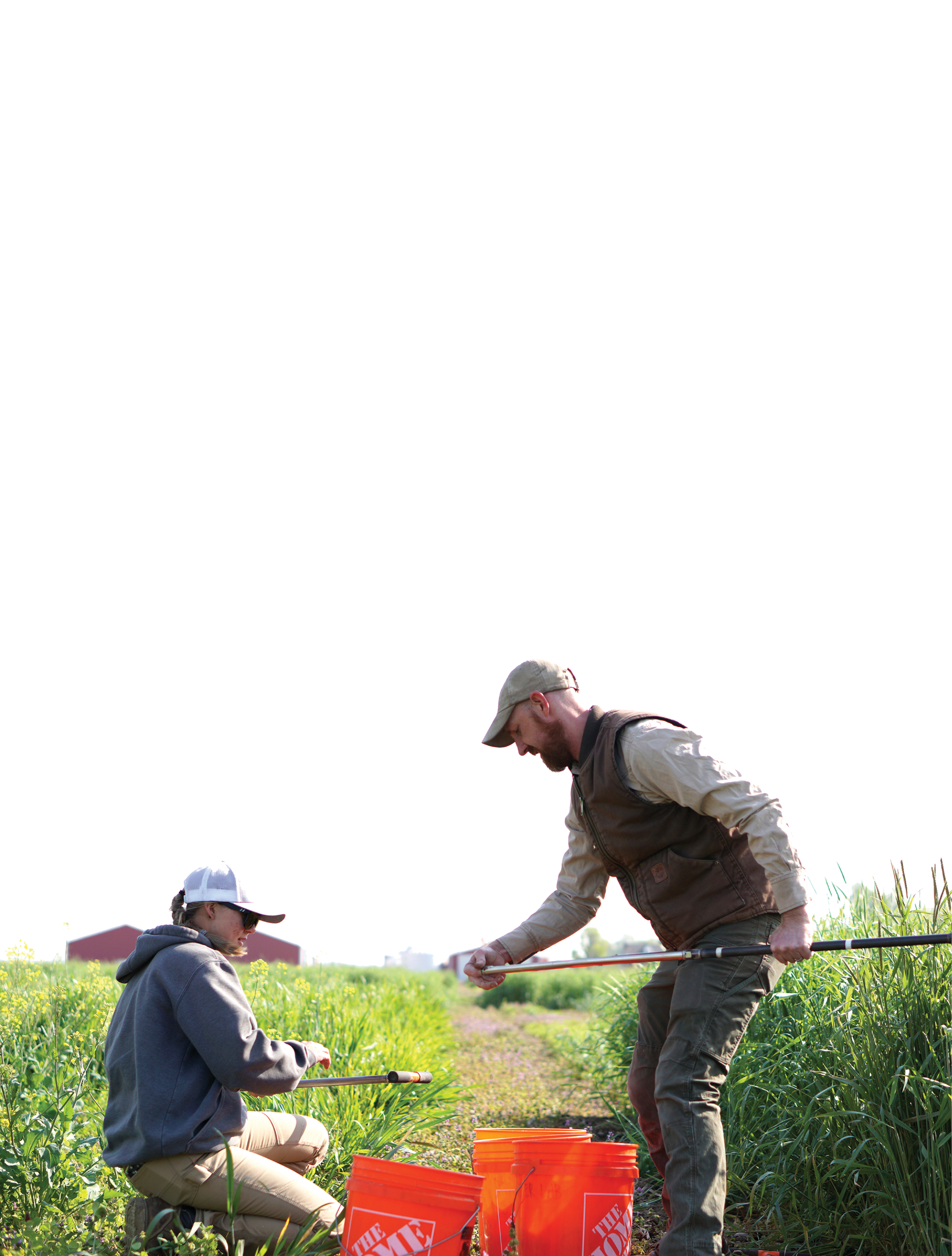Teamwork and Team Building in Science

Modern science, and particularly agricultural science, requires teamwork. There is a scale to these teams. Some are as small as an undergrad student helping a postdoc while others could be called teams within teams. Regardless of the size of the team, if you lead, co‐lead, or have influence in a group of people, you participate in team building.
Building a high‐functioning team is a worthwhile goal. It promotes better science and, I think, builds up the next generation of scientists to be successful in these team environments. Team sports also require team building and working together. This is true for elite levels in sports and also social clubs where the goal might be about fun and exercise. In each case, the people working together need to all have agreed‐upon goals, tasks, and the definition of success or “winning.” You could even think about sports as an experiment in team building.
Getting Buy‐In from All Team Members
I am two years into team building in the scientific/corporate world. As I step into this role, I am faced with the difficulty of building a small team within a larger team where the mission and vision are set. My experience is that almost every leader acknowledges the importance of vision casting and goal setting, but there is a second part of team building that is almost as important. That second part is developing the motivation or buy‐in of all the team members, particularly those whose professional goals are not in line with our own.
There are many motivations for working. Financial security is obviously a huge driving force, and until that is achieved, most other forms of motivation are irrelevant. Once an employee has achieved some financial security, what keeps people moving forward and working in the direction the team needs to be moving? I think part of the answer is being valued as a part of the team and seeing the work as important (buy‐in)

A discussion of buy‐in must start with a clear vision and clear goals for the team. This is vital in a work culture where employees wish to make a difference in the world. Many young professionals want to be part of the conversation surrounding the vision and how their specific work is a part of it. In my personal sports days (high school), we had meetings at the beginning of the season to elect a team captain and set the goals or themes for the team for that season. The vision for our sports team remained the same year in and year out, but how we focused on that vision and the goals of the team was shaped by the team members that year. For our scientific teams, I think something similar could achieve similar results. An annual team review and goal setting could encourage all levels of the team to buy into the mission and vision of the team by having a hand in shaping how the team achieves the vision and meets the goals for the year.
Another interesting and important part of sports is player awards and statistics. In basketball, there are stats for scoring, rebounding, and assists to name a few. Teams give out awards for most valuable player, best defensive player, and most rebounds in a season. Why do we keep stats on all of this, and why so many awards? I think it is about motivation and showing what is valued in players. No single person can win a game on their own if the opponent is closely matched in skill. One person might be able to score most or all the points, but others must play defense and move the object of the game along (think passing, etc.).
How Do We Acknowledge, Value Workers on Our Team?
In academia, we might think of scoring a point as analogous to being the first author on a manuscript. This would make being a co‐author like having an assist or a rebound. However, there are a long list of other people who must participate in less recognized ways in order for the goals to be achieved. I am not suggesting that everyone who lifts a finger be included as a co‐author as there are very good reasons to have rigorous standards for authorship. But I am suggesting that sports teams tend to do a good job of recognizing the players whose contributions to the team are something other than scoring points. Players are encouraged and mentored to excel where they have the most skill and encouraged to improve in areas in which they are weak. How do we as a team leaders in the scientific community acknowledge and value workers who don’t write papers or have a graduate degree but make important contributions through their dedication and work ethic so that our data are reliable?
I am not trying to discount personal integrity. I think doing a good job at whatever you are doing is a high virtue. However, a community that expects these values without acknowledging and valuing the individuals’ efforts will struggle with retaining good people. The process of valuing and acknowledging employees is hard. Often, we are overloaded ourselves, and the people we are trying to motivate may be different from us in race, gender, or perhaps in life goals and career decisions.
My goal as a supervisor is to gain buy‐in from my team and convey their value when they are their best selves. One way I am building value is through prompt and honest feedback. I work hard at giving both positive and negative feedback quickly, demonstrating that their work is both important and appreciated. Another area that makes my team feel valued is taking the time to provide context for the work they are doing. Giving the scientific or business context surrounding the reasons for a specific task and why it is important for them to perform that task in a specific way communicates that they are important to the process.
These are some of the ways I have tried to promote buy‐in from my team and show that I value their hard work. What are some ways that you create value and build buy‐in with your team?
Text © . The authors. CC BY-NC-ND 4.0. Except where otherwise noted, images are subject to copyright. Any reuse without express permission from the copyright owner is prohibited.











